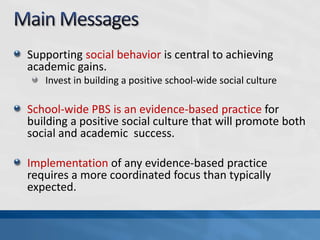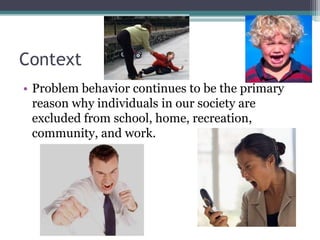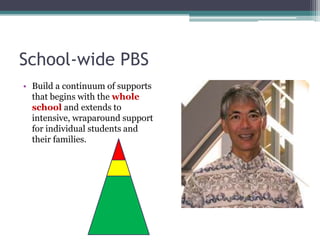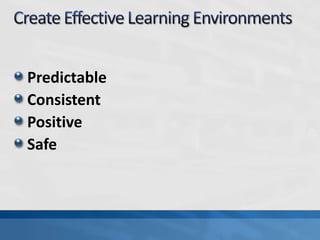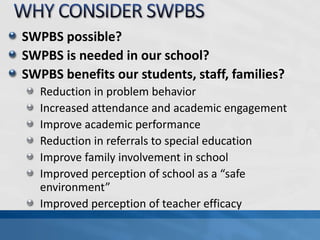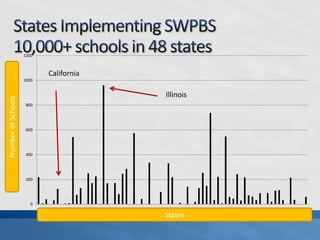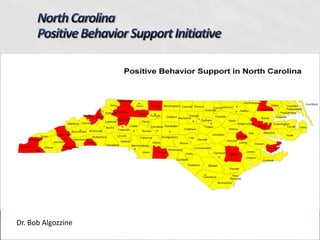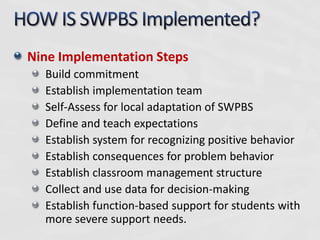The document discusses school-wide positive behavior support (SWPBS). It defines SWPBS as a systems approach for establishing a positive social culture and behavioral supports in a school. The core features of SWPBS include prevention, teaching expectations, acknowledging positive behavior, consistent consequences, and data-based decision making. Implementing SWPBS requires commitment, an implementation team, self-assessment, defining and teaching expectations, recognizing behavior, and using data for decisions.


